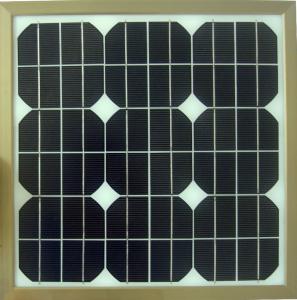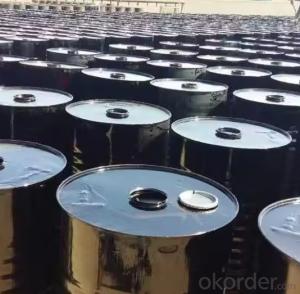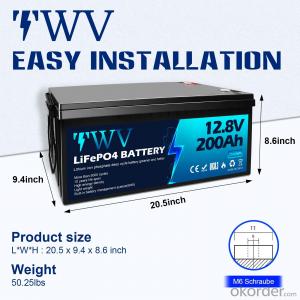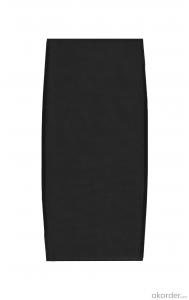Loading Port:Shanghai
Payment Terms:TT or LC
Min Order Qty:5000 pc
Supply Capability:8000000 pc/month
Monocrystalline Solar Cells A GRADE
A solar cell, is an electrical device that converts the energy of light directly into electricity by the photovoltaic effect, which is a physical and chemical phenomenon. It is a form of photoelectric cell, defined as a device whose electrical characteristics, such as current, voltage, or resistance, vary when exposed to light. Solar cells are the building blocks of photovoltaic modules, otherwise known as solar panels.
Advantage of Monocrystalline Solar Cells
1.Tire-1 Solar Cells’ Manufacturer Quality Guarantee. With a complete and sophisticated quality government system, our Quality Management have arrived world’s leading place. Customer can receive Tire-1 Cells Maker’s Quality Standard Products.
2.Trusted Warranty. We can supply trusted after-sales service to our customer. If our cells are found not in conformity to the specification of manufacturer, or should the inspected quantity found in shortage, or should the packing found damaged, the buyer has the right to claim to the seller. The claim, if any, should be presented to seller within 30 days after cargo's arrival date to the port, together with related inspection report and photos issued and provided by a reputable independent surveyor such as SGS.
3.World’s Leading Manufacturer Equipment. We imported the newest and leading production equipment from abroad. Advanced equipment can guarantee the stable quality of cells. Auto production line can also save labor cost which will further cut our production cost.
Specifications of Monocrystalline Solar Cells
Format : 156 mm × 156 mm ± 0.5 mm
Thickness: 210 μm ±40 μm
Front (-) : 1.5mm bus bars (silver),blue anti-reflection coating (silicon nitride)
Back (+) : 2.5mm wide soldering pads (silver) back surface field (aluminium)
Efficiency (%) Pmpp (W) Umpp (V) Impp (A) Uoc (V) Isc (A) |
18.20% 4.43 0.536 8.263 0.634 8.712 |
18.00% 4.38 0.535 - 8.188 0.633 8.701 |
Usage of Polycrystalline Solar Cells
Solar cells are often electrically connected and encapsulated as a module. Photovoltaic modules often have a sheet of glass on the front (sun up) side, allowing light to pass while protecting the semiconductor wafers from abrasion and impact due to wind-driven debris, rain, hail, etc. Solar cells are also usually connected in series in modules, creating an additive voltage. Connecting cells in parallel will yield a higher current; our solar cells have passed IEC Certification. With high and stable quality, our cells can greatly improve the performance of Solar Modules.
FAQ
We have organized several common questions for our clients,may help you sincerely:
1.What’s price per watt?
A: It’s depends on the quantity, delivery date and payment terms of the order. We can talk further about the detail price issue. Our products is high quality with lower price level.
2.Can you tell me the parameter of your solar cells?
We have different series of cells with different power output, both from c-si to a-si. Please take our specification sheet for your reference.
3.How do you pack your products?
We have rich experience on how to pack the panels to make sure the safety on shipment when it arrives at the destination.
4.Can you do OEM for us?
Yes, we can.
5.How long can we receive the product after purchase?
In the purchase of product within three working days, We will arrange the factory delivery as soon as possible. The perfect time of receiving is related to the state and position of customers. Commonly 7 to 10 working days can be served.
How solar cells are made
How the new materials change the made processes of solar cells.
At present, most of the solar battery board's advocated material is crystalline silicon. Crystal itself or crystal sediments above can be mixed with some other metal atoms, the atoms can combine with the silicon atoms and appear electrons, electrons can selectively generates hole, both of them can enhance the conductivity of crystal. After doping process of crystalline silicon solar cell conversion efficiency can be more than 20%, and without doping battery's efficiency never exceeded 14%.
Doping process can improve the conversion efficiency of solar energy, but it will increase the complexity of the semiconductor devices and lower its performance, exam the following manufacturing processes. Special hybrid materials in the new study can omit doping process, only need seven simple steps, it can combine new materials and simple coating process to improve efficiency. As the department of energy's Lawrence Berkeley national laboratory and the university of California, Berkeley, visiting scholar, James & dot; Block the related achievements as the first author published in the journal nature & dot; energy, he said: "we're making solar cells structure is simple, can effectively reduce the cost."
In this study, the research team at the side of the solar battery for solar silicon wafer, coated with a thin layer of molybdenum oxide, lithium fluoride is used on the back of the material. Both of the coatings only have dozens of nanometers thick and they are transparent. Because of the complementary electronic structure, it becomes very suitable for use in a solar cell.
Made your own simplest Solar Cell
Use the metal sheers to cut two pieces of copper approximately 3” x 4”. Place one piece of copper directly on the electric burner at high heat. As the copper starts to heat up, you will see an oxidation pattern start to form. After a few minutes, the colors from the oxidation pattern will be replaced by a thick black cupric oxide (CuO) coating. Leave the copper plate on high heat for one half hour to develop a thick black oxide layer. After one half hour turn off the burner and let the copper sheet slowly cool on the burner allowing the cupric oxide layer to flake off exposing a reddish-orange cuprous oxide (Cu2O) layer underneath. Once cooled, remove the copper plate from the burner and gently flake off the remaining black cupric oxide using a paper towell or by running water over it.
Cut the top off of the plastic water bottle. Bend both the heat-treated copper plate and the clean copper plate to fit on the inside of the plastic water bottle. The two sheets should not touch. Next attach an alligator clip to each sheet and attach the positive terminal of the meter to the clean copper plate and the negative terminal to the cuprous oxide coated plate.
Dissolve two tablespoons of salt in about two cups tap water, and fill the water bottle with salt water leaving about an inch at the top to avoid getting the alligator clips wet.
Once the cell is complete take a meter reading both indoors and outside. In direct sunlight, the multimeter should read a current of up to 50 microamps and a voltage of approximately 0.25 volts.







